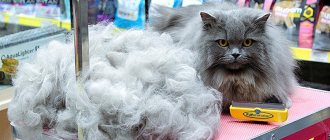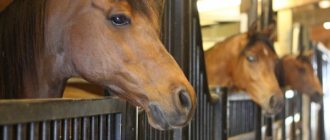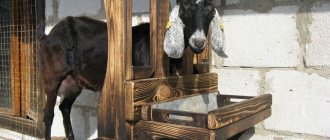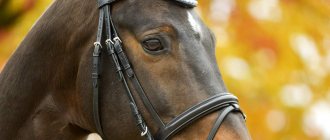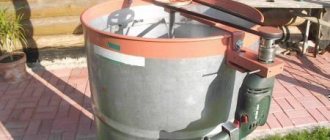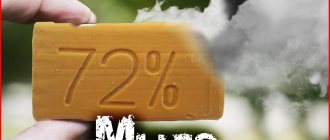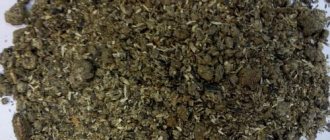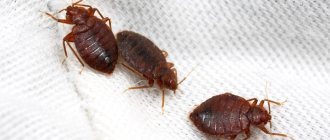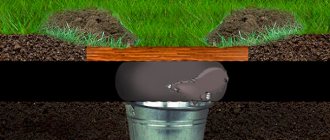Before breeding sheep, it is necessary to create conditions for their maintenance. If the owner has minimal construction skills, he can easily build housing for animals. A self-built sheepfold for sheep must meet all sanitary standards and regulations. To do this, you need to decide on the type of sheepfold and study information about construction.
Arrangement of premises
The geometric shape of sheepfolds can be different, but inside, as a rule, the overall space is divided into zones, paying attention to the place where lambing occurs.
It is quite simple to build a sheepfold for sheep with your own hands.
What kind of sheepfold is considered good?
First of all, the building must meet the following requirements:
- Correspond to the number of livestock. Animals should not be crowded; for this reason, the size of the building is determined depending on the size of the herd. Calculations are made according to how much space each animal needs. For example: for rams – 2 m, for sheep – 1.4–1.6 m, for sheep with suckling lambs – 2.5–3 m, for separately kept lambs – 0.3–0.4 m.
- Be warm enough. Adult sheep and rams, as well as lambs over 45 days old, should be kept at a temperature of at least 3–6 degrees. In the lambing compartment and where the offspring are kept from birth until 45 days, the temperature is maintained at 12–15 degrees.
- Well lit. Additional lighting is needed in the lambing compartment and in the greenhouse; artificial light sources will need to be installed here. In the remaining parts of the room there is enough light coming from the windows.
- Do-it-yourself sheepfold frame for sheep.
Maintain a certain air humidity. In order for animals to feel good, air humidity in general housing areas should be 75–85%, and in lambing areas this figure corresponds to 75–80%. - Protect from drafts. Sheep can withstand severe frosts, and it is not necessary to insulate the room if the climate of the area is quite mild, but drafts are destructive for these animals. For this reason, all cracks must be carefully sealed.
- Have a heated floor. It is better if the floor is made of wood, slightly raised above the ground. And to prevent animals' hooves from freezing, it is covered with straw. The floor can also be made at a slight slope and with grooves. This measure will make cleaning easier; the material will not absorb liquids as much.
- Be adapted to regular ventilation and cleaning. In order for the livestock to be healthy and the lambs to grow and develop well, it is necessary to keep the premises clean and provide a flow of fresh air.
At the design stage, you need to take into account all of the listed factors, calculate the area of the building, make drawings and determine the amount of materials needed. For those who do not have sufficient experience in construction, it will be useful to hire more experienced people as assistants.
It is important to know that pregnant females need to be kept in a warmer place than the rest of the herd.
The layout and size of the sheepfold depend on the number of animals that are planned to be kept in it. The determining factors in the choice of building materials are their availability and the climatic conditions of the region where the facility is being constructed. Among the main requirements for a sheepfold:
- absence of drafts;
- presence of supply and exhaust ventilation;
- good lighting;
- the ability to maintain the required temperature conditions for keeping animals.
Sheepfold
It is strictly forbidden to allow temperature changes to occur. Sheep feel most comfortable in winter at a temperature of 6-9°C, but not higher than 12°C. In regions with harsh climatic conditions, when constructing sheep farms, thermal insulation is used and heating devices are installed in the premises. Small rooms can be heated using potbelly stoves.
Table 1. Area standards for housing sheep
| Kind of animal | Standard area for 1 animal, sq.m. |
| Lambs | 0,3-0,4 |
| Adult sheep | 1,4-1,6 |
| Sheep with suckling lambs | 2,5-3 |
| Adult rams | 2,0 |
Rams and sheep older than 1.5 months should not be kept at temperatures less than 3–6°C. Young lambs are kept in rooms with a temperature of 12–15°C for up to 45 days. It should be warmest in the pens for ewes waiting to give birth. They are kept in rooms with a temperature not lower than 18°C. Animals are able to withstand low temperatures, but do not tolerate drafts well. This means that during the construction of a sheepfold, all cracks are carefully sealed.
The second worst enemy of animals is dampness. Humidity adjustment is carried out using supply and exhaust ventilation. If it is not available, install windows with opening vents for daily ventilation of the room.
Internal structure of a breeding sheepfold
It is recommended to make floors with a slight slope. This greatly simplifies the process of cleaning them and prevents the accumulation of moisture on them. Wooden boards are used as flooring material. To prevent animals' hooves from freezing in winter, straw is placed on top of them. You must ensure that it is always dry. To construct the foundation of small sheds, it is better to use screw piles.
The farm for 100 animals consists of buildings for various purposes and pastures. Sheep keeping is divided into 2 periods: stall and pasture. The first occurs during the cold season and lasts 150-180 days. The rest of the time the animals are kept on pastures.
Summer base
The dry area chosen for the sheep farm must have a slope of at least 2-3 degrees. Shepherds, shed bases, premises for shearing sheep, preparing feed, temporary greenhouses and other buildings are erected on it. When drawing up a master plan for the site, the current SNiP and standards that determine the minimum required area for keeping 1 animal are taken into account. They are for canopy bases:
- 0.5 sq.m per 1 adult animal;
- 0.4 sq.m for young animals up to 1 year.
The area standards for greenhouses are:
- 1.5-2.0 sq.m per 1 ewe;
- 1.8-2.5 sq.m per 1 ram;
- 0.7-0.8 sq.m per 1 brightness.
The size of a sheepfold for 100 heads of livestock must be at least 360 sq.m.
Construction Materials
When constructing a sheep pen, you will need the following building materials and equipment:
- rope, stakes for marking;
- hand drill and/or shovels;
- roulette;
- building level;
- wooden poles or beams for support at least 2.5 m long;
- timber for gates
- canopy beams;
- boards;
- roofing material;
- nails/screws and hammer/screwdriver;
- bolts and nuts for them;
- bitumen mastic;
- brush;
- screenings, gravel or crushed stone;
- cement;
- container for mixing concrete mortar, bucket.
When choosing boards on the construction market, pay attention to defective wood. Boards with knots and unevenness, as well as other non-marketable materials, are quite suitable for a pen - they will cope with their functions, and aesthetic properties in this case take second place. This approach allows you to save money without compromising the quality of the final result.
Equipment placement
To ensure a comfortable existence for the livestock, the necessary equipment must be arranged as follows:
- Form corrals, blocking the space with shields.
- Take care of the ventilation of the sheepfold by installing a hood in the room.
- Install a gas boiler or stove to maintain heat during the cold season.
- Install feeders in the center (or in each pen separately).
A sheep feeder must be a certain size.
In order for sheep to receive food in sufficient quantities, it is necessary to proceed from the required sizes for each animal, for example:
- for rams and ewes, the required compartment width and side height are 0.4 m, and the depth is 0.3 m;
- for lambs up to 45 days, the width of the feeder and the height of the side are 0.2 m, and the depth is 0.15 m;
- for offspring older than 45 days, the food compartment is 0.2 m in width and depth, and 0.4 m in side height;
- for fattening animals, the width of the feeder is 0.3 m, the depth is 0.2 m, and the height of the side is 0.4 m.
- Install drinking bowls taking into account the fact that an adult consumes up to 10 liters of water per day. Thus, for a herd of 30 animals you will need at least 3 drinkers of 100 liters each, and for a herd of 100 individuals you need 10 pieces of 100 liters each.
If feeding is not done individually, then the width of the compartment for each animal should be at least 0.35 m.
It can be noted that building a sheepfold with your own hands is not particularly difficult. The main thing is to draw up a detailed construction plan, complete drawings and calculations, and you can build a good building for keeping livestock.
From this video you can learn how to set up a sheepfold.
According to scientists, people began to domesticate wild sheep eight to twelve thousand years ago in the territory from the Caspian Sea to the Himalayas. In ancient times, when the Sahara was not a desert, a large number of nomadic tribes with their huge herds lived on its territory. Their life directly depended on the sheep, as a result of which their attitude towards them was almost like children.
It is worth mentioning the story of the Golden Fleece, allegedly stolen by the Greeks in ancient Colchis. Scientists believe that this story is partly true and is connected with the Greeks’ campaign for fine-wool sheep. In Russia, sheep breeding also dates back to ancient times; purely Russian boots, felt boots, are made precisely from sheep’s wool.
Let's go for a walk
There should always be a free range for livestock near the sheepfold, where animals can spend time in the summer. There is a canopy for protection from bad weather. The place for walking must be flat, hard, and grass must grow abundantly on it. Such an open enclosure is surrounded by a fence. It’s easy to calculate the walking area: one sheep requires a space of 1.7-5 square meters. m., ewe – 1.2-3 sq. m., lamb - 0.8-2 sq. m.
How to build a sheepfold with your own hands: plan for a mini farm for keeping sheep
Let's consider the option of a sheepfold for keeping 5 sheep and one ram when kept together.
1 - general premises for keeping rams and sheep; 2 - greenhouse - a room where lambing takes place in winter; 3 - feed storage; 4 - utility room; 5 - oven; 6 - shed for storing hay; 7 - area for walking animals.
Read more: Mesh for protecting grapes from wasps and birds, methods of control, making your own chain-link bags Plan of a sheepfold for 5 sheep and 1 ram with a lambing section
| Material | Quantity | Price, rubles (*) | Cost, rubles |
| 1. Foundation: | |||
| Screw piles | 10 pieces. | 2500,00 | 25000,00 |
| Concrete M200 | 1.5 m3 | 2900,00 | 4350,00 |
| Steel sheet 4.0 mm thick | 0.05 t | 32000,00 | 1600,00 |
| Channel | 35.0 meters | 210,00 | 7350,00 |
| Total: | 38300,00 | ||
| 2. Walls: | |||
| Edged board, thickness 32 mm | 2.0 m3 | 4500,00 | 9000,00 |
| Insulation Rockwool Light Butts Scandic 50 mm, 5.76 m2 | 10 packs | 418,00 | 4180,00 |
| Fiberboard | 20 sheets | 130,00 | 2600,00 |
| Profiled sheet | 40 sheets | 210.0 m2 | 8400,00 |
| Wooden window 46x47 cm, single-chamber double-glazed window | 4 things. | 1904,00 | 7616,00 |
| Wooden door block 40x700x1900 mm, aspen | 5 pieces. | 2837,00 | 14185,00 |
| Unedged board 25 mm thick | 2.0 m3 | 3800,00 | 7600,00 |
| Beam 150x150 mm | 1.0 m3 | 7500,00 | 7500,00 |
| Vapor barrier Axton B, 15 m2 | 3 packs | 278,00 | 834,00 |
| Expanded clay | 5.0 m3 | 1500,00 | 7500,00 |
| Total: | 69415,00 | ||
| 3. Roof | |||
| Edged board, 40 mm thick | 0,8 | 4500,00 | 3600,00 |
| Unedged board, 25 mm thick | 2,5 | 3800,00 | 9500,00 |
| Edged board, 25 mm thick | 1.0 m3 | 4500,00 | 4500,00 |
| Ruberoid | 10 rolls | 245,00 | 2450,00 |
| Slate | 70 pieces | 280,00 | 19600,00 |
| Shaped elements | 5000,00 | ||
| Total: | 44650,00 | ||
| 4. Gender | |||
| Edged board, 40 mm thick | 2.0 m3 | 4500,00 | 9000,00 |
| Unedged board, 50 mm thick (joists) | 0.5 m3 | 3800,00 | 1900,00 |
| Red brick | 100.0 pcs. | 12,70 | 1270,00 |
| River sand | 5.0 m3 | 630,00 | 3150,00 |
| Total: | 15320,00 | ||
| 5. Heating | |||
| Red brick | 500.0 pcs. | 12,70 | 6350,00 |
| Fireproof brick | 20.0 pcs. | 57,0 | 1140,00 |
| Concrete M300 | 0.5 m3 | 3200,00 | 1600,00 |
| Casting | 2500,00 | ||
| Total: | 11590,00 | ||
| Total: | 179275,00 |
(*) The cost of materials is taken from the Leroy Merlin Product Catalog (St. Petersburg), as well as from the websites of seller companies in Moscow as of March 1, 2017.
In order to build such a structure from the above materials, it will take 15-20 days for a team of 5 people. The cost of work, excluding the cost of operating mechanisms (bulldozer, BKM), will be approximately, excluding the cost of taxes and fees, 150,000.00 rubles. Also, this cost does not include overhead costs of the organization and taxes that a legal entity pays when performing work in accordance with the concluded Agreement.
Farmers with construction skills can build a small sheep farm with their own hands. Before starting work, it is necessary to draw up a project for a sheep farm, as well as prepare tools and building materials.
Step 1. Mark the area. The contours of the sheepfold being built are indicated by stakes stuck into the ground, which are connected to each other by cords. The building should be shaped like the letters “P” or “G”. Its width is made at least 10 m. The length is determined at the rate of 1 m per 1 animal. When marking the site, the walking side of the sheepfold is turned to the South. Buildings should not occupy more than 1/3 of the territory allocated for keeping sheep.
Territory marking
Step 2. Construction of the foundation. It is better to erect capital buildings on a concrete pillar foundation. They are poured in a pre-dug pit. The depth of its base should be below the soil freezing mark. Concrete is poured into wooden formwork, which is laid in the foundation pit. The strength of the future structure is ensured by reinforcement.
Columnar foundation formwork
Step 3. We build a frame and walls made of wood. This is the most accessible and cheapest material. Timber is used to construct the frame. It is installed on the foundation after laying a waterproofing layer on it. Most often, this is a layer of roofing felt. The boards are nailed to the frame so that there are minimal gaps between them. Existing cracks are sealed with tow or covered with plywood.
Construction of wooden walls
Step 4. Insert windows and doors. Window openings are cut along the entire length of the building. Windows must be located at a height of at least 1.5 m from the floor. If there is no artificial ventilation in the sheepfold being built, the window frames are covered with film. In sheepfolds with a large number of livestock, double doors or gates with a wicket are installed.
- width - 2.5-3 m;
- height - 2.0-2.5 m.
Gates and double doors without thresholds are installed.
Gate to the sheepfold
Step 5. Roof installation. In animal housing, it is not advisable to use poles to support the roof frame. The best option for roofing is hanging rafters. The roof of a sheepfold can be single- or double-sloped. The simplest and cheapest option for roofing is roofing felt. Lay it on plywood or dry boards, which are firmly attached to the rafters.
Installation of double-sided roofing
Step 6. The choice of flooring option depends on the region. In the south of the country, most sheds have an earthen floor, on top of which straw is poured. In the north of the country, floors are made of boards at least 23-25 mm thick.
Straw on the floor in the sheepfold
The earthen floor must be well compacted. Prolonged exposure of animals to soft soil has a negative impact on the ligaments and hooves of animals. It is better to concrete large areas of premises or lay them with plastic slatted floors.
Construction stages
The construction of any object begins with drawing up a project. Buildings for keeping a small number of sheep in a peasant farmstead are temporary and do not require permission for their construction. Sheep farms, which are capital buildings, cannot be erected without an agreed upon project, drawn up taking into account all construction standards, and a permit for the construction of the facility. Regardless of what type of building will be erected, it is necessary to mark the territory.
Important. You can save money when developing a sheep farm project by using standard technical documentation. Current legislation contains rules prohibiting the location of large livestock complexes closer than 1 km from residential buildings, sources of drinking water and some other objects.
Choosing a place to build a shed
The ideal site for building a sheepfold is a hill protected from the wind, located next to a pasture. The size of a sheep farm plot is calculated taking into account the food supply necessary for the normal maintenance of animals. The area for pastures and sheds is calculated based on the number of livestock. The average standard area of a sheep farm per animal is 15-20 sq.m. They are located in relation to residential buildings on the leeward side.
Koshara with pasture
Construction of the foundation
The choice of foundation type is influenced by 2 main factors - the size of the shed and the type of soil. When using a concrete base, it must be kept for at least 1 month after pouring. During this period it completely hardens. On wet, sandy soils and mountainous terrain, sheds are erected on screw piles. The depth of the foundation depends on the degree of soil freezing. Its base should be below the freezing depth. When building sheepfolds in the north of the country, it is better to use columnar foundations.
Walling
To build walls, blocks, lumber or brick are most often used. These are the most affordable building materials in all regions of the country. Before construction begins, wooden materials are impregnated with special solutions that prevent rotting processes. Northern sheepfolds are necessarily insulated and equipped with vestibules, which prevent cold air from entering the premises.
Roof installation
The choice of material for roofing depends on the region of the country. Where winters have little snow, corrugated sheeting can be used. In areas with a large amount of annual snowfall, slate is used.
Prices for different types of slate
Sheep fold for sheep breeding
Raising sheep at the dacha is, of course, possible, but organizing industrial production will be very difficult, since raising sheep at home requires significant areas for keeping plus pastures. Despite this, it still makes sense to have a small herd of sheep. Sheep are not only meat, but also very healthy and tasty milk (albeit in small quantities), as well as wool, fluff and the skin itself.
- There are three ways to keep and breed sheep and rams:
- Pasture;
- Stall;
- Combined content.
In this material we will look at stall-pasture keeping using the example of a sheepfold for a small herd of ten to fifteen heads. When building a sheepfold for sheep, it should be taken into account that with proper care, each animal requires an area of three square meters.
Do-it-yourself sheepfold
Sheep and animals are sensitive to drafts and high humidity, so the room for keeping sheep must be dry, well ventilated, and the floor of the sheepfold must be dry straw, which, guided by the rules of care and maintenance, must be changed every three days. The temperature in the flock for adults and lambs after collection from the uterus should be 3-6°C, in the maternity ward 12-16°C, so a heat regulation system should be considered. Below is a drawing, a plan of the future sheepfold and a sketch of the actual premises for keeping sheep at home.
Creation of specific conditions
When planning to build a sheepfold (large hangar or small barn), the following practical recommendations must be taken into account:
- The height of the structure is selected taking into account the breed of animals. For short sheep, it is enough to raise the ceilings to a height of 1.4-1.6 m, and in a barn for large breeds - more than 2-2.2 m.
- Crowding can only be avoided by using an optimal area. The sheepfold project is developed based on the following standards: one adult ram requires 1.5-2.2 m² of area (with a volume of up to 3.5 m³), a sheep - 1.1-1.6 m² (for fine-wool breeds - up to 2-2 ,1 m), sheep and lamb - at least 2.4-2.8 m².
- Temperature conditions. Sheep can tolerate low temperatures, but severe frosts can kill them. It is advisable to maintain the room temperature for adults (more than 45 days old) at least 4-6 ºС. Lambs and in the lambing department need a temperature of about 11-16 ºС.
- Air humidity. Excessive humidity in a sheepfold can lead to various diseases. It is recommended to provide it no higher than 74-84% in the general compartment, and no higher than 72-78% in the area where lambs are kept.
- The sheep shed must have fresh air. This is ensured by forced ventilation with the exception of drafts. When a sheep hangar is being serviced, air circulation, or simply a draft, should not exceed 0.2-0.3 m/s.
- Illumination. There are no special requirements for this parameter. Natural light coming through glass windows is considered sufficient. In this case, we can proceed from the following calculation: the floor area is 16-18 times greater than the area of the window openings. Artificial lighting is installed in the lambing area and to provide animal services.
Manicure with silver - 140 photos of the best manicure ideas with an exclusive design. Step-by-step instructions + technique: ideas and colors for silver manicure
At its core, a sheepfold is a room where animals can be kept in winter, at night and in bad weather.
Be careful
It is necessary to trim the wool evenly, along the entire length, but do not cut the sheep. Sharp scissors are required for an even cut. When cutting, you will have to straighten them with a whetstone from time to time. You will get an even cut if the area of the captured wool and the scissors do not close completely.
The part that remains open must also be folded towards the middle and placed on top of the first folded parts. The finished layer of wool must be rolled up, the ends facing each other, moving from the head and tail. Tie the finished roller with twine and you can put it in bags.
The most profitable and common sheep on the farm are considered to be the Romanovskaya meat fur coat breed. They are not only unpretentious in food and maintenance, but also prolific. The lifespan of sheep is 10 – 15 years. But keeping them after 5 years of life is not advisable. Therefore, when choosing a sheep, you need to pay attention not only to its physique, but also to its age.
Hi all! Today I want to talk about such a business sector as livestock farming. Beginners are wary of it, but an analysis of the sphere shows its promise. Sheep farming as a business for a novice farmer will delight you with its simplicity, and its products will be in demand.
Sheep barn
On a small peasant farmstead, animals are kept in warm sheds. They are placed on the leeward side of residential premises. Sheds are lightweight structures that are built from auxiliary materials. They can be built on a light foundation or without it. It is better to make the roof of the barn gable. This roofing option allows you to use the attic of the barn for storing hay, which can serve as roof insulation.
Sheep barn
When constructing walls from slab, it must be sheathed on the inside or outside with plywood or OSB. Northern barns are insulated. The height of the ceilings in the barn is kept low. This allows you to make it warmer. The flow of air into the room is ensured using a wooden box with a valve, which is installed in the wall and has a cross-section of 50*50 cm. The windows in the barn should be wide. The door in the barn can be installed as a single door. Sheds are built along with open pens for grazing animals.
Read more: Slotted floors - description, types, do-it-yourself installation step by step
Fence installation instructions
Once the pen is completely constructed, you can begin installing the protective fence. One side of it should border the walls of the covered pen and fit snugly against it, the other should be installed on the edge of the walking yard.
According to the previously applied markings, the supporting racks should be installed. They can be metal pipes or wooden beams, dug to a depth of at least 40 cm, with a distance of 4–6 m. This is done so that the stand must be in place of each corner of the site.
Next, horizontal crossbars should be attached to the support at a distance of 15–20 cm from the ground and the top of the racks. At the end of the procedure, you should get a stable frame that will withstand any load. It should be sheathed; to do this, boards, metal mesh, etc. must be secured to the horizontal crossbars. This is done in such a way that the outer sheathing turns into an integral structure.
For what purposes can you engage in sheep farming?
Despite the advantages, sheep farming as a business in Russia cannot be called prosperous. The problem is that the products of domestic farms cannot even meet market requirements, not to mention world standards. But budding businessmen will be helped by examples of successful Western farms.
Traditionally, wool production dominated in the Russian Federation. But prices for raw materials are rising slowly, which does not allow covering costs. A private farm has little chance of concluding a contract with a wool processing enterprise, so problems arise with sales.
To avoid them, focus on the production of lamb and young lamb. It is also profitable to sell rams and pregnant queens for brood. Place your bet on meat breeds: North Caucasian or Texel. But they have disadvantages, because in winter they need to be kept in insulated rooms. You can avoid difficulties if you choose the Romanov breed: females are fertile, with each litter containing 3-5 lambs. You will also notice the following advantages:
- undemanding to feed;
- good immunity.
Unpretentious animals quickly adapt to climatic conditions, so there will be no problems with maintenance.
Reproduction
The behavior of the flock needs to be monitored daily, but sheep are generally easy to raise. The point is that sheep can do their business whenever they please. As farmers said, a sheep could become pregnant even during the lactation period. There is a plus here, because because of this she can produce 3 or more lambs in a year. Puberty occurs at four to five months, but during this period it is not yet recommended to let the ram near the ram.
There is an opinion that sheep can only be bred when the female has gained 80% of the weight of an adult sheep, which is about forty kilograms. Mating occurs at this moment, the duration of which is two to five days. The female carries the lamb for 145 days and then gives birth on her own without human assistance.
Three days before the expected birth, the sheep should have the wool between its legs and around the udder trimmed. Before giving birth, the female will begin to get up and lie down frequently and bleat loudly. There is only enough milk for three lambs, so if a ewe has given birth to more than three babies, they should be switched to artificial feeding.
Advantages and disadvantages of business
The idea of starting a farm and starting sheep farming has the following advantages:
- You don't need a large amount of money to start a business.
- Since many breeds tolerate cold weather, you won’t have to spend money on expensive buildings.
- There will be no problems with feeding, since a large number of herbs are suitable for animals. Their teeth are designed in such a way that the sheep bite off the stems near the ground. This means they do not need a large grazing area.
- Compared to other livestock sectors, sheep farming requires less labor. Sheep are not as large as cows or pigs and are not aggressive. They also don't destroy trees like goats do.
- They don't need a lot of space to keep them. You can place sheep together with other farm animals.
The disadvantages of the business are the relatively low level of profit, although a figure of 25-30% is considered high for livestock farming. The main thing is that you avoid mistakes and immediately discard the stereotype that any wool can be sold. In fact, the beginner does not organize selection work to obtain high-quality raw materials at the output, and you can forget about cutting and grading techniques. To avoid mistakes, focus on meat production: lamb obtained from sheep of the current year of birth is in demand.
Immediately pay attention to the fruitfulness of the area: how many animals will feed themselves without depleting the soil? The best way for a beginner is to turn to an expert. If he says that 1 hectare will feed 1 sheep, do not try to breed a large herd. Otherwise, soil erosion will occur and you will have problems with feeding.
How to start a sheep farming business
First, draw up a business plan for sheep farming: a ready-made version can be found on the Internet, but it will need to be adapted to your situation. Also decide on the format of the activity. In addition to a personal subsidiary plot (LPH), you can acquire a farm. What is the difference between these concepts?
When running a personal household, activities are aimed at meeting the needs of the family. If you prefer to become a farmer, you will have to register as an entrepreneur. The difference doesn't stop there:
- The farm owner is required to submit a report to the tax authorities. If you breed animals for personal needs, you will not need to submit documents to the fiscal services.
- The form of private household plots provides for voluntary participation in pension funds. The farm owner who has registered a state of emergency must make contributions for his employees.
- For private household plots there are restrictions on the area of land. If you need pasture larger than 2.5 hectares, you will have to farm.
- Owners of private household plots cannot count on grants available when registering a state of emergency.
If you run a private household, then the activity is not considered entrepreneurial. At the same time, you have the right to sell surplus, so it is advisable for beginners to choose this form. When you gain experience and expand your business, you will register a farm. This is necessary when the activity is carried out clearly for commercial purposes.
Site selection
Whether you decide to buy a ready-made farm in the countryside or build new paddocks, the availability of pasture will play an important role. They need to be equipped with fences to protect the animals from predators. You can build fences out of wire and use a weak electric current. Sheep are insensitive to its effects because they are protected by thick wool, and predators can be scared away.
Without the possibility of free grazing, keeping sheep is unprofitable.
In order not to deplete the area, you will need to make internal fences and take care of rotation of pastures. The fact is that sheep graze thoroughly, destroying plants at the roots. If you have limited grazing area, then use mobile fencing: you will direct the sheep to a certain area. In other areas, new grasses will have time to grow.
In order for an animal to have enough green food in the summer, it must spend at least 14 hours on the pasture. During this time, a ram will eat 16 kg of grass, a suckling queen - 15, a lamb - 2. Consider the factor when choosing a pasture: the best option would be a meadow with fine grass. But wet areas with buttercups, sedge and horsetail, as well as forest pastures will be unsuitable.
Experienced sheep breeders also give advice on regions. In the Astrakhan region, Kalmykia, Stavropol region and the North Caucasus, the opportunity to open a new business is limited due to competition. It is easier to cope with the tasks in the central regions, but it will not be possible to raise livestock on grass from pastures without additional feed. But grain prices will be more affordable, so there are still prospects.
If you are hatching the idea of starting a sheep farming business on a grand scale, purchase purebred animals. Productivity is not satisfactory, and you will know about possible problems in advance. Among the breeds, breeders distinguish the following:
- Romanovskaya is distinguished by multiple births, reaching 300%. The meat is in demand in the central regions, but residents of the Caucasus consider it tasteless. The breed also has a drawback: it is kept mainly for its wool, which is difficult to sell. Experienced sheep breeders continue to argue about the benefits of such breeding.
- Texel can be difficult to find in the Russian Federation. But the productivity of the breed makes up for the disadvantage, because the meat of the animals has a pleasant taste and the absence of a specific smell.
- Tsvatrbles is a meat and dairy breed. Productivity is 235%, and the queens lamb easily. Thanks to their thick fur, animals can withstand cold, dampness, and wind.
- Dorper is suitable for meat breeding, as Canadian farm owners have proven. But in the Russian Federation it can be difficult to find lambs, and the price is high. Despite the disadvantages, the advantages of the breed outweigh. The animals require less feed than ordinary sheep, which is ensured by their metabolic characteristics. As a result, they have enough grass even in infertile pastures.
- The Gissar breed is suitable for breeding for meat. Although its representatives will not please you with fertility, the growth rate of lambs is 600 g per day. Please note in advance that there are several directions in it: meat, meat-grease and lard.
Read more: Date palm at home, how to store it, how it grows
Once you have decided on a breed, think about the age of the animals. If you do not have experience, it is not worth taking lambs. It is new farmers who complain that their pets die for no apparent reason. After all, sheep are different from other animals: for example, sick pigs change their behavior. But the sheep, as long as it is able to stand on its feet, grazes with the herd. Without a trained eye, you will not notice the loss of body weight, which is “masked” by the coat, or the limping.
Gaining experience by purchasing young animals is not a good idea. Therefore, refuse to purchase lambs and opt for females 3-5 years old. The beginner’s task is not to find a high-breed animal, but to buy healthy sheep. They must have endurance, because during the first 2 years you will inevitably make mistakes in care, feeding, and breeding.
Recruitment of personnel for farming
Recruiting staff requires planning, especially in the early stages when you have limited funds. For a herd of 200-300 sheep, several employees will be needed:
- shepherd;
- milkmaid;
- employee to feed animals and maintain cleanliness.
To save money, duties can be combined. You will also have to contact a veterinarian and a shearer, but if there are a large number of heads, they are hired on a permanent basis.
Choose a shepherd carefully, because you are not going to hire an ordinary shepherd. Find a hereditary specialist: he performs the functions of a veterinarian, shearer, and livestock specialist. On what terms will he agree? When hiring, many people ask to transfer 50 heads into their possession; they negotiate a percentage of the income, bonuses for the safety of the offspring, etc.
The problem arises with the staff for feeding the sheep and cleaning. Since the work is dirty, candidates are often marginalized. If possible, pay more, but hire decent, ideally light-drinking people.
Receipt and sale of products
The main source of profit for a beginning sheep farmer will be the sale of meat products. Trade in cheese will also be added to this, but milk from these animals is not in demand.
Experts note that a restructuring of mentality is becoming an important task for pastoralists in the Russian Federation. Try to perceive your activity as a business from which you need to get maximum efficiency.
Meat is sold through markets: this is more profitable than selling it to resellers. If possible, enter into contracts with restaurants or supermarkets. True, problems arise in this area, since well-known establishments have already acquired suppliers. The latter would rather change the conditions than allow them to intercept the client.
In general, sales are possible in the following ways:
- slaughter and independent sale;
- wholesale shipment of live sheep;
- organizing your own slaughterhouse and producing semi-finished products.
You will acquire a slaughterhouse equipped according to the standards when the business gains momentum. But practice shows that the greater the scope, the easier the sale and the more profitable the price.
As for wool sales, sheep farming as a business in Russia is moving away from this direction. The classified product is the most valued, but it is difficult for private farm owners to cope with its production. Selling unprocessed wool is not profitable: you will spend more on hiring a shearer and transporting the goods.
Sheep cheese is in demand, but another problem arises here. According to reviews from sheep farmers, the only farm in the district is not able to satisfy consumer demands. As a result, the loss of the client occurs: to avoid such developments, farmers unite through forums. They coordinate the work, with each farm owner specializing in the production of a certain type of dairy product.
When selling lamb or sheep's cheese, the challenge is not to compete with the supermarkets: if you compete with the giants, you will lose. Your target audience does not consist of consumers of mass products, but of people who monitor their health and choose environmentally friendly and tasty food. By focusing on quality, you will find a consumer.
What you need to know about feeding
Although there is plenty of pasture food in the warmer months, be prepared for the fact that 60% of the cost of running a farm will be related to animal nutrition. You can reduce costs in the following ways:
- Feed your flock on a schedule and do not feed it any other food until it can cope with the old feed. Sheep have a peculiarity: if you allow them to choose the “tidbits”, the leftovers will disappear. When you offer alfalfa to animals, they will eat the soft leaves and roots first. Make sure the food is completely gone before giving new food.
- Avoid situations where pets walk on the forage. This will lead to unnecessary waste and the spread of diseases.
- Dosage food daily, give the required minimum. Your charges may spend most of their time in a state of slight hunger.
- For nutrition, use grain, legume and cereal hay, clover, alfalfa. Straw from barley or peas is used as top dressing.
To minimize feed loss, equip pens with grain bins or screens. Correct installation will also protect workers: since the animals are slightly hungry, they try to quickly get food and jostle around the feeders. Since adult ewes are massive, at this time they can injure the person who brought hay or grain. By installing feeders on the outside of the pens, you will solve the problem.
Sheep have a low water requirement because they can go several days without it. In winter, they can make do with snow, but without access to fresh moisture, ewes have problems with pregnancy and lactation. To avoid complications, equip pens with heated drinking bowls.
Pedigree sheep farming as a business
Beginners are wondering whether it is possible to make money by breeding pedigree sheep. After all, they ask for several hundred dollars for a breeding sample! But in practice, the main source of profit remains the sale of meat. The shades of taste associated with the breed are unlikely to be distinguished by the consumer. The main criterion remains age: the difference between the meat of a 3-year-old and 1-year-old sheep is immediately noticeable.
For this reason, beginners should not spend money on purchasing expensive animals. You are unlikely to be able to purchase a high-breed sheep; moreover, due to a lack of knowledge, you will make mistakes in keeping and breeding. It will take you 1-2 years to gain experience, so buying a couple of sheep for $500 each is not a good idea. Animals can die simply because you didn’t give the anthelmintic on time!
In addition, starting with good breeding material is expensive. The purchase of livestock and feed will require investments that are unaffordable at the initial stage. And the status of a breeding reproducer can only be obtained with 5 years of experience, so just look for healthy animals that are inexpensive and inexpensive to maintain.
Using pedigree cattle for meat production is not always profitable; Farmers usually come to a pure breed within 5-6 years, during which time they work with more budget-friendly options.
Laying the foundation
From the many types of foundations, you should choose the option that is most suitable in terms of time and budget. The pouring hardens for at least a month, construction must begin taking into account all the little details, so that the sheep will sit near warm feeders before frost.
Consider a pile foundation. It is considered the most reliable; the technology does not require digging huge holes or making formwork. In addition, it is suitable for any type of soil. Wooden piles are driven into the ground using special equipment, and for drilled wells they are drilled with hand tools. A layer of waterproofing is laid on the fundamental basis for strength and reliability. Afterwards they make a wooden frame.
Main characteristics of a sheep pen
There is no need to additionally insulate the walls, but various cracks need to be removed. When it is necessary to build a shelter for sheep in a place where there is no frost in winter, then an ordinary shed will be sufficient, which should always be dry. However, if in winter it often rains or a large amount of snow falls, then the sheepfold must be a warm barn with well-closing windows and doors. Small animals and sheep should be kept in a fairly cool sheepfold, and pregnant sheep should be moved to a warm room.
It is worth noting that the nursery in which newborn lambs will be kept should be as warm as possible. They are often tightly closed on all sides and provided with thick bedding. In such a room, the floor must be made of thick wood. Wood flooring is always slightly raised relative to ground level.
The sheep pen must be well ventilated and thoroughly cleaned. There should be no inconvenient corners or places in which the animal would not fit at full height when kept. When there are only a few rams, it is necessary that they be comfortably accommodated in the barn, because the animals do not like close quarters and then begin to get sick often.
Similar answers in scanwords
- Koshara – Large sheep pen 6 letters
- Koshara – Housing for sheep 6 letters
- Koshara - A pen or room for sheep; sheepfold 6 letters
- Koshara - Cats can live there too 6 letters
- Koshara – Dormitory 6 letters
- Koshara – Sheep hostel 6 letters
- Koshara – Housing for keeping sheep 6 letters
- Koshara - Synonym for sheepfold 6 letters
- Koshara – Big kebab house for a hungry wolf 6 letters
- Koshara – Large room for kept people. sheep 6 letters
- Koshara – “Barracks” for a ram harem 6 letters
- Koshara – Sheepfold 6 letters
- Koshara – Sheep pen 6 letters
- Koshara – Sheep room 6 letters
- Koshara – Corral with sheep 6 letters
- Koshara – “Office” of a shepherd 6 letters
- Koshara – Sheep “hostel”. 6 letters
- Koshara - A pen in which 6 letters run
- Koshara – Pen for bright animals 6 letters
How to make a sheepfold with your own hands
The construction of a sheepfold is usually divided into the following stages:
- foundation production;
- installation and covering of a reliable frame;
- laying rafters and sheathing;
- laying high-quality roofing;
- installation of windows, doors and drinking bowls in the barn;
- interior decoration of the room.
Read more:
- How to build a dovecote with your own hands - arrangement project
- How to build a gooseneck with your own hands, drawings, dimensions
- Do-it-yourself ventilation in a pigsty technology diagram
- Slotted floors - description, types, do-it-yourself installation step by step
Completion of construction work
The construction of the sheepfold is completed by installing windows and laying the floor. It is important to understand: simply pouring concrete is not suitable. A sheep is a delicate animal that can catch a cold; soft bedding made of straw is not suitable due to the fact that livestock on such surfaces will strain their legs, hence problems with ligaments and diseases.
A board should be placed on top of the concrete: this combination is ideal for long-term use of the room. If you initially make floors entirely of wood, it is better to prepare in advance for its immediate replacement. The short-lived material is not recommended for use in the construction of barnyards.
Another tip: the floors in the building should be made slightly inclined, then it will be easier to clean up waste.
The windows should be located at an approximate height of 1.5 m. You can choose the size yourself, the main thing is that the sheepfold is well lit. It is better to build double-leaf doors, convenient for 2 or 3 animals to exit at once.
